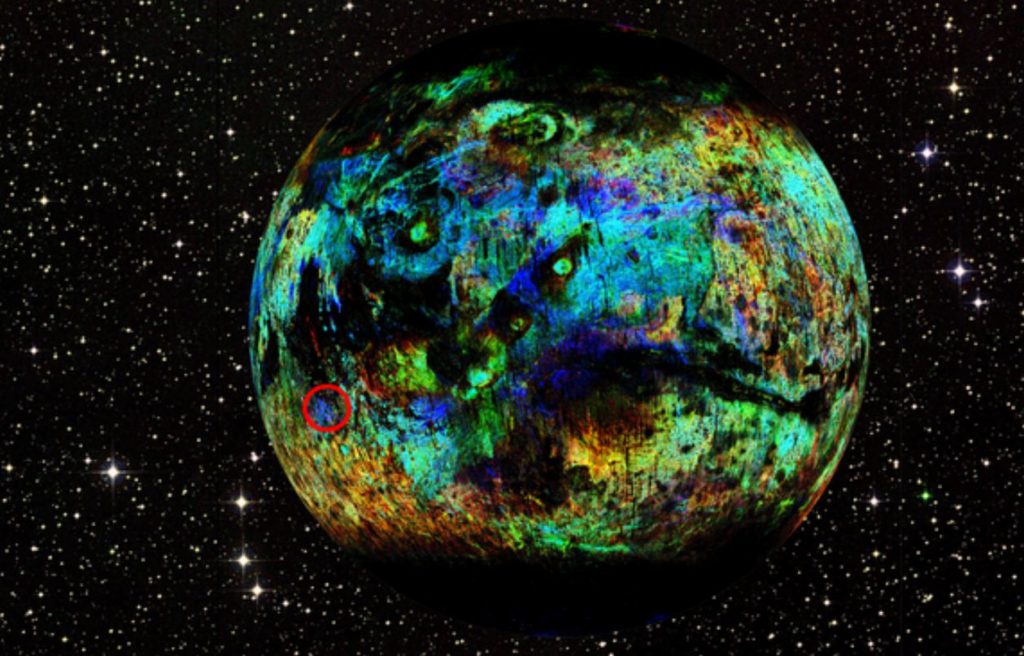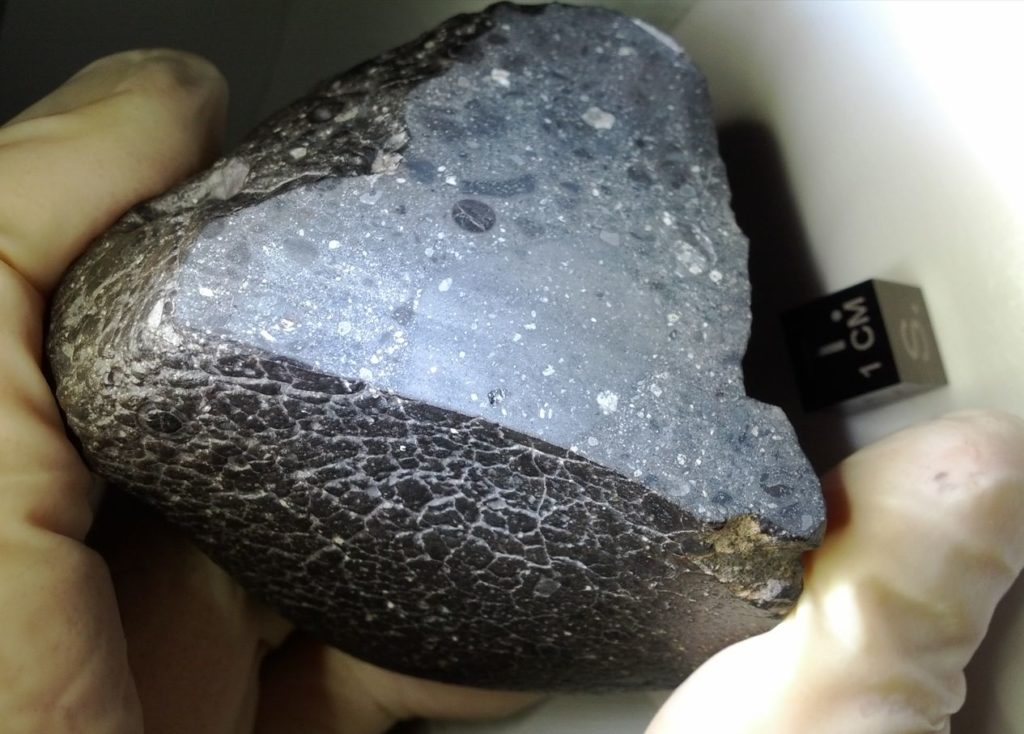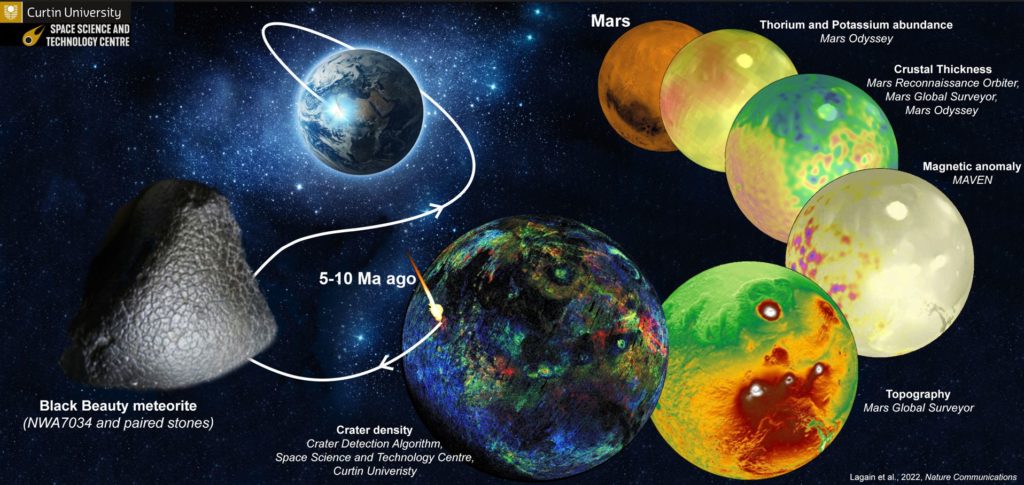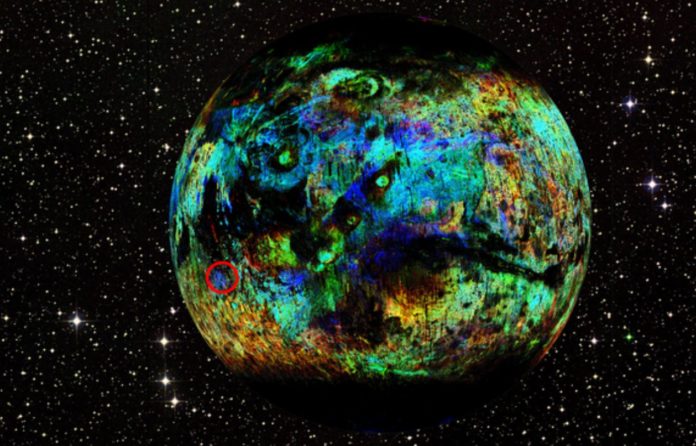Black Beauty is the only brecciated Martian sample on Earth. This means that it is made up of angular pieces of different types of rock that are stuck together. All other Martian meteorites are made up of only one type of rock.
For the first time ever, a new study headed by Curtin has determined the precise location of the oldest and most famous Martian meteorite, providing important geological hints about the planet’s early history.
The new research, which was posted today in Nature Communications, used a multidisciplinary approach that included an algorithm for machine learning to identify the specific crater on Mars that was responsible for the ejection of the so-called “Black Beauty” meteorite and paired stones, which were first confirmed as being discovered in northern Africa in 2011.

The Pilbara city of Karratha, which is more than 1500 kilometers north of Perth in Western Australia and is home to one of the oldest terrestrial rocks, inspired the researchers to name the specific Mars crater after it.
The exciting discovery, according to lead author Dr. Anthony Lagain of Curtin’s Space Science and Technology Centre in the School of Earth and Planetary Sciences, provided previously unknown information about the Martian meteorite NWA 7034, also known as “Black Beauty,” which is the subject of extensive research around the world. Black Beauty is the only brecciated Martian sample on Earth. This means that it is made up of angular pieces of different types of rock that are stuck together. All other Martian meteorites are made up of only one type of rock.
“For the first time, we know the geological context of the only brecciated Martian sample available on Earth, 10 years before the NASA’s Mars Sample Return mission is set to send back samples collected by the Perseverance rover currently exploring the Jezero crater,” Dr. Lagain remarked.

Finding the location of the ‘Black Beauty’ meteorite’s origin is crucial since it contains the oldest remnants of a Martian body ever discovered, dating from 4.48 billion years ago, and it demonstrates how Earth’s continents and Mars’ extremely old crust are similar in age.
The region they identified “as being the source of this unique Martian meteorite sample constitutes a true window into the earliest environment of the planets, including the Earth, which our planet lost because of plate tectonics and erosion,” he added.
The discovery was made possible by an algorithm that was created internally at Curtin by an interdisciplinary team that included members of the CSIRO, the Australian Space Data Analysis Facility, the Curtin Institute for Computation, the School of Civil and Mechanical Engineering, and all of the above, with grant money from the Australian Research Council.

Researchers at the Pawsey Supercomputing Research Centre used one of the fastest supercomputers in the Southern Hemisphere and the Curtin HIVE (Hub for Immersive Visualisation and eResearch) to look for impact craters in a very large number of high-resolution images of planets.
This study paved the way to find the ejection site of other Martian meteorites, Professor Gretchen Benedix, another co-author from Curtin’s Space Science and Technology Centre in the School of Earth and Planetary Sciences, said. This will allow for the creation of the most complete picture of the geological history of the Red Planet.
“We are also adapting the algorithm that was used to pinpoint Black Beauty’s point of ejection from Mars to unlock other secrets from the Moon and Mercury,” Professor Benedix added.
“This will help to unravel their geological history and answer burning questions that will help future investigations of the Solar System such as the Artemis program to send humans on the Moon by the end of the decade or the BepiColombo mission, in orbit around Mercury in 2025.”
Image Credit: Lagain et al. 2021, Nature Communications and Lagain et al. 2022, Nature Communications and NASA
You were reading: Study Pinpoints The Exact Home Of The Oldest And Most Famous Black Beauty Meteorite
